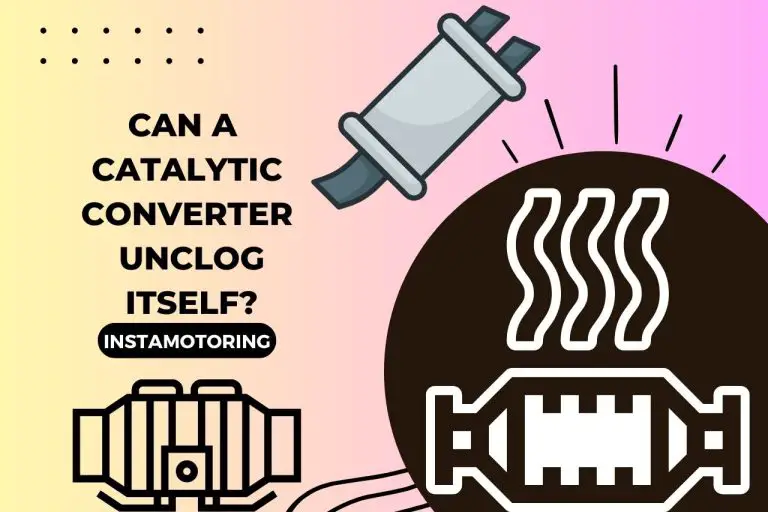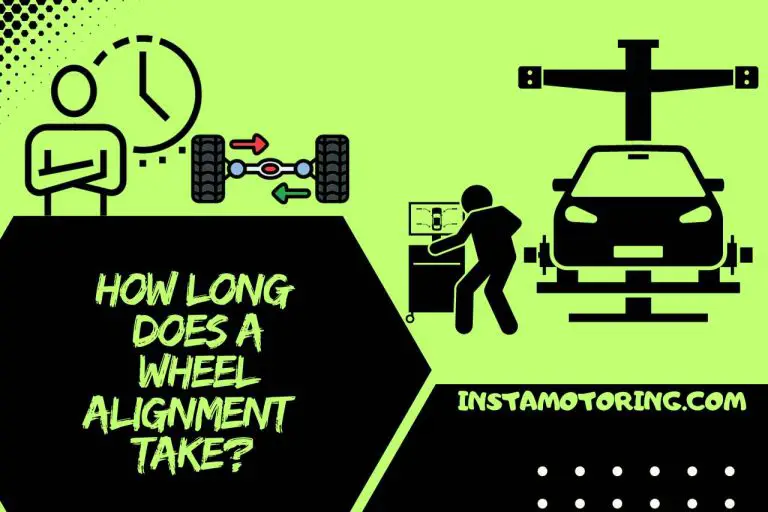Mercedes Brake Pad Wear: Keep Your Mercedes Safe
Concerned about checking brake pad wear on your Mercedes? As a Mercedes user, ensuring your vehicle’s safety is paramount. Monitoring brake pad wear is crucial for optimal braking efficiency and prevention of potential issues. In this guide, we’ll explore the significance of checking Mercedes brake pad wear, effective methods, and proactive maintenance benefits. Stay attentive to enhance both driving experience and your prized Mercedes’ longevity.
What Does Check Brake Pad Wear Mean On A Mercedes-Benz?
“Check Brake Pad Wear” on a Mercedes-Benz means that the vehicle’s onboard diagnostic system has detected potential wear or thinning of the brake pads, indicating they might require inspection or replacement soon.
- Diagnostic System: Modern Mercedes-Benz vehicles are equipped with advanced diagnostic systems that continuously monitor various components for optimum performance and safety.
- Brake Pad Importance: Brake pads are crucial for stopping the vehicle efficiently. Over time and with regular use, they wear down, decreasing their efficiency and potentially jeopardizing safety.
- Wear Indicators: These are small devices on the brake pads of Mercedes-Benz cars. When the pad wears down to a certain thickness, the wear indicators get exposed and make contact with the brake rotor, triggering the warning message.
- Prompt Action: If you see the “Check Brake Pad Wear” alert, it’s recommended to schedule a service appointment with a Mercedes-Benz service center. Delaying can lead to further damage and reduced braking efficiency.
How Do You Check Brake Pad Wear On A Mercedes-Benz?
To check brake pad wear on a Mercedes-Benz, one typically examines the visible part of the brake pad through the wheel spokes. If less than 1/4 inch remains, it may be time for a replacement.
- Safety First: Ensure the vehicle is on a level surface and turned off. If you’ve recently driven, allow time for the brakes to cool.
- Wheel Inspection: Look through the wheel spokes. The outer brake pad is the material pressed against the metal rotor.
- Measurement: Ideally, there should be at least 1/4 inch of the pad. If you see less than this, consider scheduling a maintenance check.
- Warning Signs: Besides thickness, also look for uneven wear patterns, cracks, or any foreign debris lodged in the pad.
- Listen for Noises: A high-pitched squealing when braking usually indicates the wear indicators are exposed, signaling a need for replacement.
- Dashboard Alert: Some Mercedes-Benz models have built-in sensors that trigger a “Check Brake Pad Wear” alert on the dashboard when pads are nearing their end.
Additional Tips:
- Using a flashlight can help enhance visibility, especially in low-light conditions.
- Always consult your Mercedes-Benz user manual for specific guidelines and indications related to brake pad checks.
How To Reset Mercedes-Benz Check Brake Pad Wear?
To reset the “Check Brake Pad Wear” warning on a Mercedes-Benz, typically, once you replace or inspect the brake pads, the alert should reset on its own. If it doesn’t, a manual reset through the vehicle’s onboard computer system may be required.
Step-by-Step Reset Process:
- Ignition Position: Insert the key into the ignition and turn it to the first position. Ensure all dashboard lights are illuminated but don’t start the engine.
- Navigate the Menu: Using the arrow buttons on your steering wheel, navigate to the “Service” menu on the instrument cluster.
- Select “Brake Pad Wear”: Once in the service menu, locate and select the “Check Brake Pad Wear” option.
- Initiate Reset: Once the brake pad wear message is displayed, press and hold the “OK” or “Reset” button until you receive a confirmation message that the warning has been reset.
- Turn off the Ignition: After confirming the reset, turn the key to the off position and then remove it.
- Start the Engine: Turn on your vehicle to ensure the “Check Brake Pad Wear” warning has disappeared.
Always make sure that you’ve adequately addressed any brake-related warnings before attempting to reset the warning. Safety should be a priority. If you’re uncertain about the process, consulting your Mercedes-Benz owner’s manual or visiting a certified service center is advised.



I Changed The Brake Pads On My Mercedes-Benz, But The Check Brake Pad Still Comes Up.Why ?
If you’ve changed the brake pads on your Mercedes-Benz, but the “Check Brake Pad Wear” warning still appears, it’s likely due to the onboard computer system not registering the change, requiring a manual reset.
How To Reset Mercedes-Benz Check Brake Pad Wear?
- Understanding the Sensor: Modern Mercedes-Benz vehicles are equipped with brake pad wear sensors. When pads wear down, these sensors get activated, sending a signal to the dashboard. After changing pads, the system might not always auto-reset.
- Initiate the Process: Insert your key into the ignition and switch it to the first position. This will light up the dashboard but not start the engine.
- Steer to “Service”: Utilizing the steering wheel’s arrow buttons, browse to the instrument cluster’s “Service” menu.
- Find the Warning: In the service menu, identify and choose the “Check Brake Pad Wear” option.
- Press to Reset: Upon highlighting the brake pad warning, sustain pressure on the “OK” or “Reset” button until a confirmation appears, indicating the reset’s success.
- Complete the Procedure: Turn the ignition off and extract the key. Restart your vehicle to ascertain the warning has been eliminated.
Ensure that after replacing brake pads, wear sensors are either replaced or correctly reconnected. A disconnected or damaged sensor could also be the reason behind persistent warnings. If resetting doesn’t resolve the issue, it’s advisable to seek assistance from a certified Mercedes-Benz technician.
What Is A Mercedes-Benz Brake Wear Sensor?
A Mercedes-Benz brake wear sensor is a safety feature designed to alert drivers when their brake pads have diminished to a critically low level, necessitating replacement.
- Functionality: This sensor acts as an early warning system. When brake pads wear down over time, they eventually reach a point where braking effectiveness can be compromised. The sensor detects this threshold and triggers an alert.
- Design: The wear sensor is a small piece usually attached to one or two brake pads per wheel. As the brake pad wears down, the sensor (which is in close proximity to the rotor) eventually contacts the rotor. This creates an electrical circuit, sending a signal to the vehicle’s computer system.
- Dashboard Alert: Once the sensor activates, a “Check Brake Pad Wear” or similar warning appears on the car’s dashboard, alerting the driver to the need for brake maintenance.
- Replacement: When replacing brake pads, it’s recommended to replace the brake wear sensor too, especially if it’s been activated. This ensures the system remains effective and accurate for future alerts.
- Not Just Mercedes-Benz: While this discussion focuses on Mercedes-Benz, it’s worth noting that brake wear sensors are prevalent in many high-end vehicles, underscoring their importance in modern automotive safety.
The brake wear sensor is a crucial component that ensures drivers are informed in advance about potential brake issues, ensuring road safety. Regular checks and timely maintenance can guarantee a long lifespan for brakes and enhanced driving safety.
Can I Drive A Mercedes-Benz That Shows Check Brake Pad Wear?
While you can technically drive a Mercedes-Benz that displays the “Check Brake Pad Wear” warning, it’s not recommended due to potential safety risks associated with diminished braking efficiency.
Delving Deeper:
- Safety Concern: Brakes are paramount to vehicle safety. The “Check Brake Pad Wear” alert indicates that your brake pads have reached a point where their effectiveness might be compromised. Continuing to drive might risk reduced stopping ability, posing a hazard.
- Understanding the Alert: The warning doesn’t necessarily mean an immediate brake failure, but it’s an early sign that the pads are nearing their end. It’s a proactive feature, designed to give drivers a heads-up before the situation becomes critical.
- Wear and Tear: Over time, brake pads thin out due to friction. Driving with worn-out pads can damage other brake components, like rotors, leading to pricier repairs in the future.
- Immediate Action: If you notice the warning, it’s advisable to schedule an appointment with a trusted mechanic or a certified Mercedes-Benz service center. This ensures expert evaluation and appropriate action.
- Temporary Measures: If you’re far from a service center, minimize high-speed driving, sudden stops, and try to avoid heavy traffic areas until the issue is addressed. But remember, this is a temporary measure, and seeking professional assistance is essential.
Always prioritize safety. While it might seem convenient to delay a visit to the mechanic, it’s not worth risking your safety or incurring potential additional repair costs.
Do All Mercedes-Benz Wheels Have Brake Pad Wear Sensors?
Not all Mercedes-Benz wheels are equipped with brake pad wear sensors. Typically, high-end models and recent years feature these sensors, but it varies based on the model and the specifications chosen by the owner.
A Closer Look:
- Model Specific: While many modern Mercedes-Benz vehicles come with brake wear sensors as standard, some older models or base versions might not have them on every wheel. It’s commonly found that higher-end models or those with premium packages will have sensors on both front and rear wheels.
- Purpose of the Sensors: The main function of these sensors is to alert the driver when the brake pads are nearing the end of their lifespan. They serve as a precautionary measure, ensuring that the brakes are replaced before they become a safety concern.
- Location: In models that do feature brake wear sensors, they aren’t necessarily present on all four wheels. It’s common for Mercedes-Benz vehicles to have sensors on the front wheels since they usually experience faster wear due to bearing a significant portion of braking force.
- Checking for Sensors: If unsure about the presence of brake wear sensors on your Mercedes-Benz, consult the owner’s manual or check with an authorized Mercedes-Benz dealership. They can provide specific information about your particular model.
While brake wear sensors are a valuable safety feature, they’re not universally present on all Mercedes-Benz wheels. Regular brake maintenance and check-ups are essential, regardless of whether your vehicle has these sensors or not.
Can I Reuse My Old Mercedes-Benz Wear Sensors?
While some components on a Mercedes-Benz can be reused, it’s generally not advisable to reuse old brake wear sensors once they’ve been triggered.
In-Depth Analysis:
- Sensor Activation: Mercedes-Benz wear sensors work by creating an electrical circuit that breaks when the brake pads wear down to a certain level. Once this circuit is broken, the sensor is triggered, and the “Check Brake Pad” warning is activated.
- Safety Concern: Reusing an old sensor might not offer an accurate reading on the state of the brake pads. This can compromise safety, as you might miss the warning the next time your brake pads are worn out.
- Affordability: Brake wear sensors are relatively affordable components. Given their crucial role in safety and the potential risk of reusing old ones, it’s wiser to invest in new sensors when changing brake pads.
- Installation: When brake pads are replaced, the wear sensors can be easily damaged during removal. Even if they look intact, their internal components may be compromised, making them unreliable for future use.
The integrity and functionality of brake wear sensors are paramount for the safety of your vehicle. It’s recommended to always use new sensors when replacing brake pads to ensure accurate readings and optimal performance.
FAQ
How long can you drive after brake pad warning light Mercedes?
After the brake pad warning light on a Mercedes illuminates, you can typically drive for approximately another 1,000 miles before the pads become completely worn out. However, the exact distance can vary based on driving conditions and brake usage.
It’s essential to remember that this warning is an indication of worn brake pads, which can affect braking performance and safety. Therefore, while the vehicle can still be driven, it’s recommended to have the brake pads inspected and replaced as soon as possible to maintain optimal braking performance and ensure safety on the road.
How long do Mercedes brake pads last?
Mercedes brake pads typically last between 30,000 to 50,000 miles, depending on driving conditions, driving habits, and the specific model of the Mercedes vehicle. Factors like frequent city driving with lots of stops and starts or aggressive driving can wear them out faster. It’s essential to keep an ear out for any unusual sounds and an eye on the brake warning lights.
Routine inspections during service appointments can also help gauge the wear level of the brake pads. For the best performance and safety, it’s advisable to replace them when they get close to their wear limit, even if they haven’t reached it yet.
How serious is brake pad wear?
Brake pad wear is a serious concern that directly impacts the safety and performance of a vehicle. When brake pads wear down, they become less effective at slowing or stopping the car, increasing the chances of accidents. If ignored for an extended period, worn brake pads can damage the brake rotors, leading to costlier repairs.
It’s crucial to address brake pad wear promptly, listening for any unusual noises like squeaking or grinding and paying attention to any changes in braking responsiveness. Regular inspections and maintenance can ensure that the brake pads are replaced when necessary, preserving the safety of the vehicle and its occupants.
Here’s An Interesting Video To Watch,
VIDEO CREDITS: Diesel Mercedes YouTube Channel
Discover More: Related Articles You Can’t-Miss
- Both Front Brake Calipers Not Releasing – (Diagnosing and Resolving Issues)
- No Fluid Coming Out When Bleeding Brakes



My name is James, I work as an Automotive Designer with 9 years of experience. I also work as a mechanic and vehicle inspector. I love deciphering complicated car exteriors and interiors and resolving fluid and oil troubles. InstaMotoring.com is here to help you troubleshoot your car with dependable and expert help.



![Engine Bogs Down When Accelerating – [Causes & Easy Fixes]](https://www.instamotoring.com/wp-content/uploads/2022/12/engine-bogs-down-when-accelerating-768x512.jpg)



